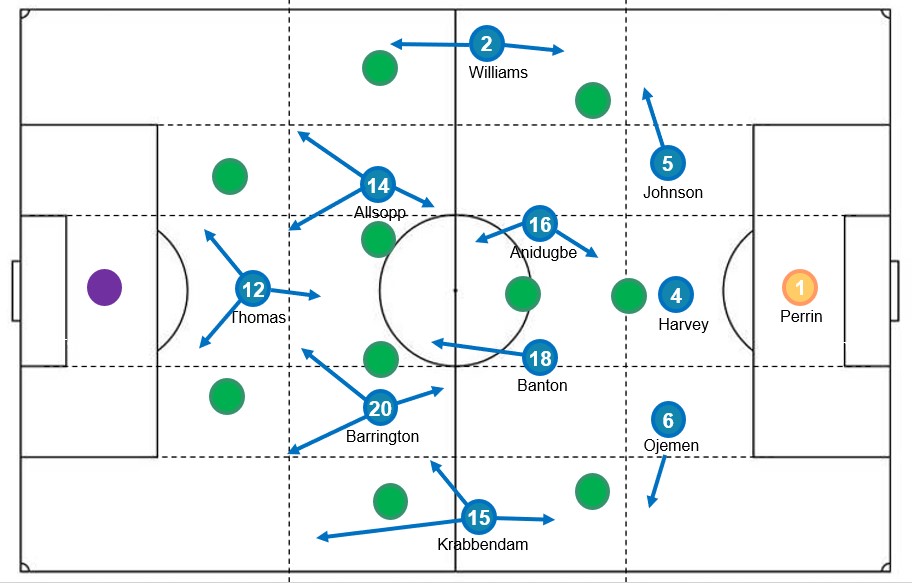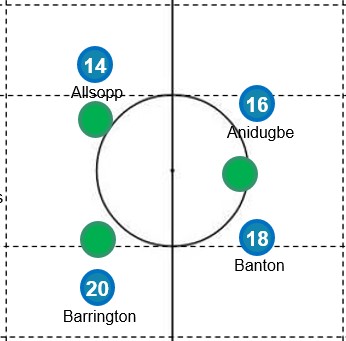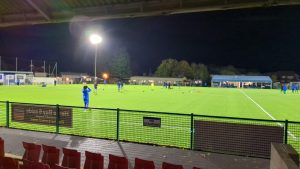First look: Kevin Watson at Herne Bay FC
There’s only so much you can take from a manager’s first game in charge. Especially when Kevin Watson’s first game at Herne Bay was a Velocity Trophy match. On a World Cup night in November. And only two days after the new man got the job.
But were there a few signs of what’s to come at Herne Bay? And how Watson might just hoist Herne Bay out of the relegation zone?
A few things to consider
First a caveat.
I haven’t seen Herne Bay enough this season to say for certain that this was a complete overhaul of their playing style.
My most recent trip to Stanley Gardens was back in September. That night they lost 0-6 to Hornchurch using a 4-2-3-1. Although after letting in six you could say all bets are off.
Also, I’m a bit of a fan of how Watson got Cray Valley PM playing. So it’s possible everything here is just me getting carried away.
But a lot of what was on display last night against Sevenoaks looked very familiar to the way Watson had Cray Valley PM playing. Lots of possession and patience.
At least that was the case last season, which I wrote about here.
But moving on, let’s start with how they set up yesterday.
Switching to a back three

The main difference from when I last saw them was three center-backs, with wingbacks and a box in midfield.
Taking a closer look revealed a few tactical specifics. Such as…
- High defensive line
- Everything played short
- Possession based football
- Passing options
- Box in midfield
- Rotation between forwards
Here’s a look at each of these in more detail
Keeping a high line
Jordan Perrin set the tone in the first half. He unleashed a relentless barrage of reminders to his defensive line to push up.
That he had to keep reminding them suggests this might have been a new instruction. But Perrin was the man to deliver it. Full volume until they heard him. Which they did.
And for a lot of the game, it worked.
It made direct play from Sevenoaks much harder, especially from deeper positions where Herne Bay pinned them back.
Anything played long reached around the halfway line where the center-backs could shift across to cover.
Not that this worked every time. Sevenoaks got through the gaps on a few occasions and turned the center-backs. But the intention was clear.
Playing short from the keeper
Perrin played everything short. Usually to the center-backs who split wide at the back across the width of the pitch. But he looked centrally to the pivots a few times who could receive and turn into space.
This made them harder to press and gave them passing options wide to the wingbacks. Or inside passing lanes to the pivots behind the first line of defenders.
That also applied to…
Building up from the back/ possession based
They were very patient at the back with everyone trusted to keep the ball, not waste it, and play high-percentage passes.
There was no hesitation in passing back to the centre-backs, or to the keeper. Which isn’t always easy when some crowds insist the ball should only ever be kicked in one direction.
I was never a player of any note, so this part is a guess. But it must be exactly what you want to hear when a new manager comes in:
Play football. Keep the ball. Pass the ball. Use the skills and game intelligence you’ve developed since you were a kid. Put that to use. What better vote of confidence?
So there was a lot of recycling and switching play across the back three to shift the Sevenoaks block. The wing backs dropped wide if needed, as did the forwards, moving into the halfspaces.
For the first half at least Herne Bay dominated the ball.
Passing options
Once they played the ball past the first line of defenders, they usually had options ahead.
In possession, Bode Anidgube and Jason Banton had short passing options to the attacking midfielders. Or to the wingbacks. Especially on the left, where Che Krabbendam could make wide runs, or cut inside.
There was a lot of movement from the front three. This supported play in wide areas where the wing backs got up in support, but also with angled runs into the space behind the defence.
Banton especially was quick to spot these. His execution on the night wasn’t up to his usual standard (I thought he always looked good for Kingstonian last season), but he was quick to spot runs. The idea was there.
And, if none of this was an option (Sevenoaks were no pushovers) they would simply play back and start again.
Box in midfield
The two attacking midfielders in front of the double pivot gave them options in possession. But it also gave them a more solid defensive structure through the centre.

The natural overload in midfield often closed off the centre. The pivots and the weak side attacking midfielder would drop centrally. That allowed the ball side attacking mid to apply pressure while blocking the middle.
It also forced Sevenoaks wide, which gave Herne Bay time to organise.
Rotation at front
Finally (for this article at least, there was no doubt a lot more going on), there was rotation among the forwards.
This helped them create overloads in dangerous areas in the opposition half. Thomas occupied the centre for the most part, but Eddie Allsopp and new signing Courtney Barrington were harder to pin down.
Conclusions
Those were some of the basics on display, and there’s always a chance I’m completely wrong.
The individual abilities of some of the players will also help Herne Bay.
Allsopp especially has a pinpoint set-piece delivery. Krabbendam looks dangerous cutting inside and running at defenders.
On a final note, the problem with rating a manager is the tendency to only see the positives.
There was a lot of those last night. But when talking about a team rooted to the bottom of the table it seems an appropriate place to start.
The real test will be against tougher opposition. That test comes this weekend against third-to-bottom Brightlingsea Regent.
Postscript: You can see what the manager himself had to say about the game in the clip below.
